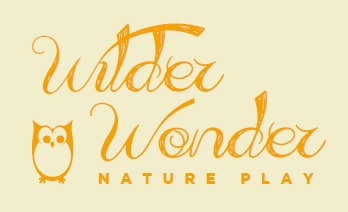About two years ago, when we moved into my neighborhood, I took my daughter (then almost one) to visit the "Greenspace". This little corner of green quickly became our favorite hangout. It offered countless opportunities for play, from climbing and rolling on the mini "hills" to pretend-play using the tree stumps and picnic table. When I began my internship at the Brookfield Zoo for my graduate program, this little space took on new meaning for me.
The Aftermath: Reflections from the Neighborhood Social
A couple weeks ago, I had the opportunity to host a nature play station at my neighborhood social. I put out my baskets, stamp pads, and natural materials, and hoped they would look inviting enough to lure a child or her family away from the ice cream and the bouncy house to take some time to interact with nature and make beautiful art. What ensued over the next four hours went well beyond my biggest hopes.
You say "Alfresco!" I say "Al Fresco!" Let's just eat outside already! It can't be that difficult, right?
Kindness and Gratitude: A Visit to Mint Creek Farm
A Week of Inspiration, Day 7: Connections
A Week of Inspiration, Day 6: Look Deep
A Week of Inspiration, Day 5: Love This Earth
A Week of Inspiration, Day 4: The Forest Grew and Grew
A Week of Inspiration, Day 3: A Walk on the Wild Side
A Week of Inspiration, Day 2: The Beauty of the Earth
A Week of Inspiration
Loose Parts!
The Gift of Freedom
I have found myself constantly surprised and amazed at the things that happen when children are able to take the reins of their own activities and learning. Not only are children much more capable than we give them credit for, they also can be much more creative when we (adults) get out of their way a little bit.
Playing With Blocks, Part 2: The Nature of Things
It has been found that contact and experiences with nature can have many benefits for children. When you can't do nature outside, one of the easiest ways to provide for interaction with nature is to bring it inside to you. Natural materials, like sticks, rocks, and pinecones, provide a different element to incorporate into play- and lend themselves especially well to block play.
Playing With Blocks, Part 1: Style Matters
Playing Pretend
Let it Snow! Examining Inquiry in Toddlerhood
The Season of Caring Continues: Fostering Empathy
Fostering Self-Discovery: 3 Steps to Promote, Not Direct, Your Child's Play
Piaget and Vygotsky would agree that when an adult steps into the child’s play, that play changes. Is the play still directed by the child? Can it still lead to her own original thoughts and discoveries? I think that depends a lot on how this interaction occurs. To most effectively engage with our children in play, we need to allow for maximum child autonomy and discovery while providing opportunities to add meaning to what the child is doing.





















